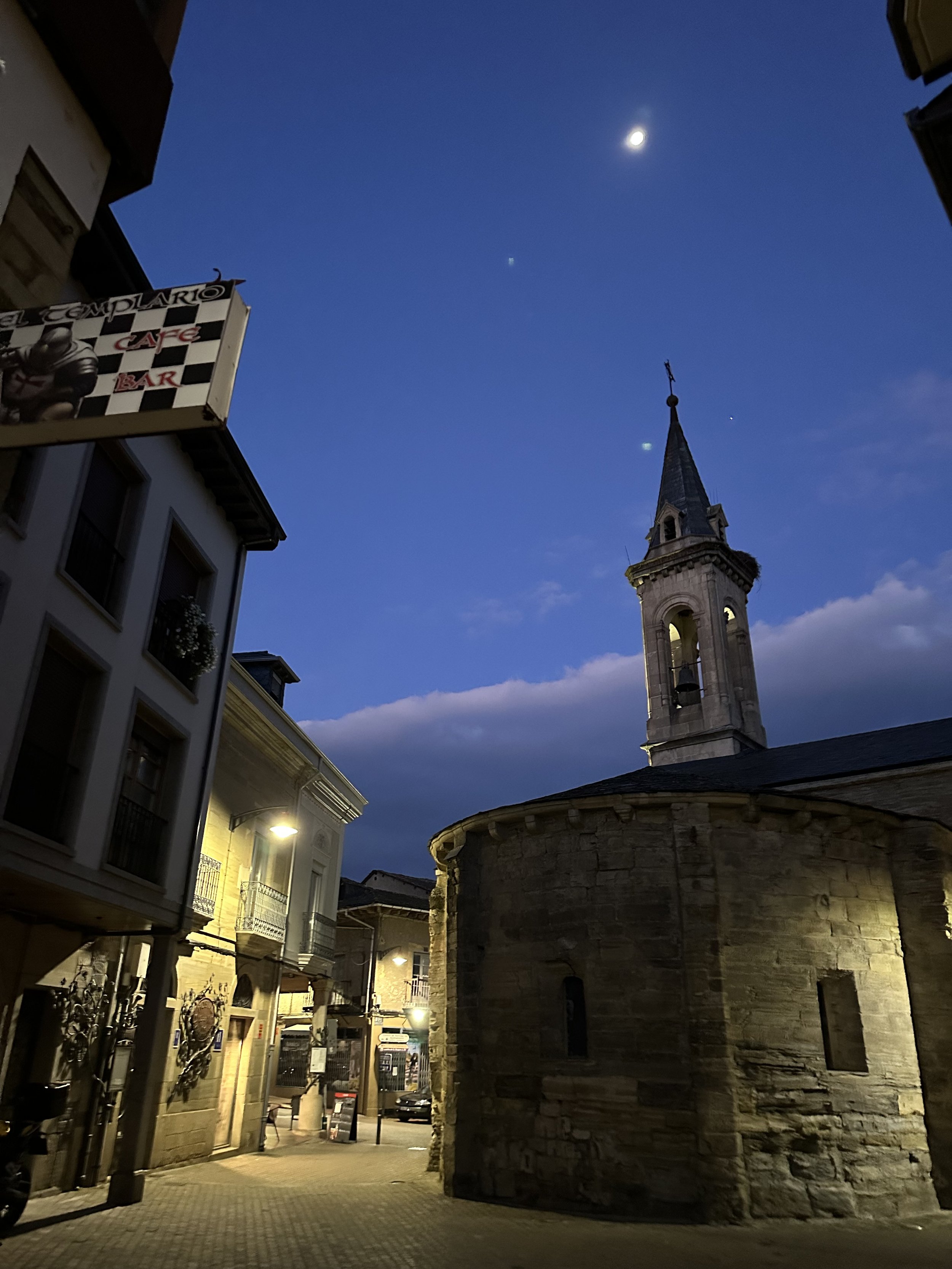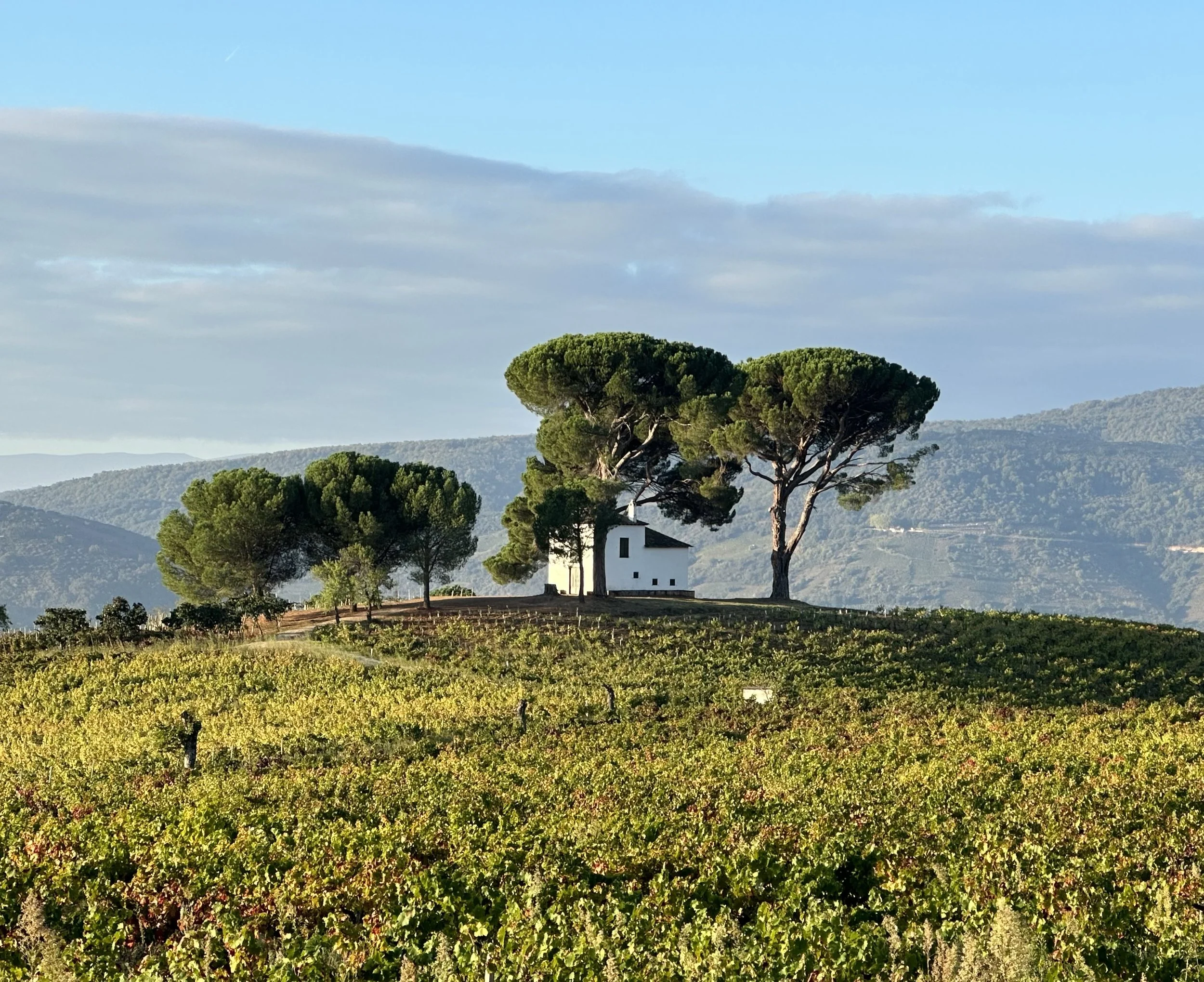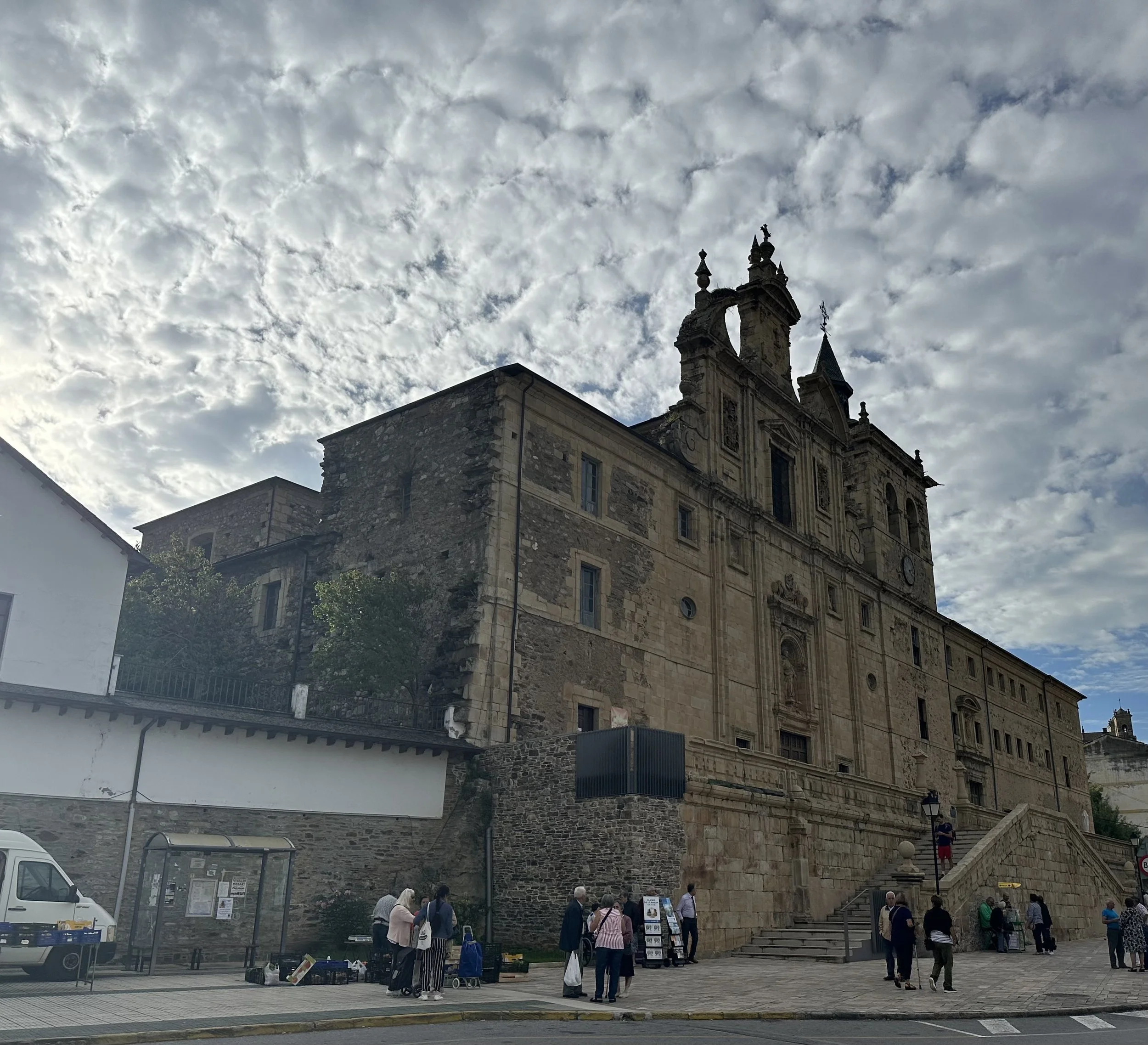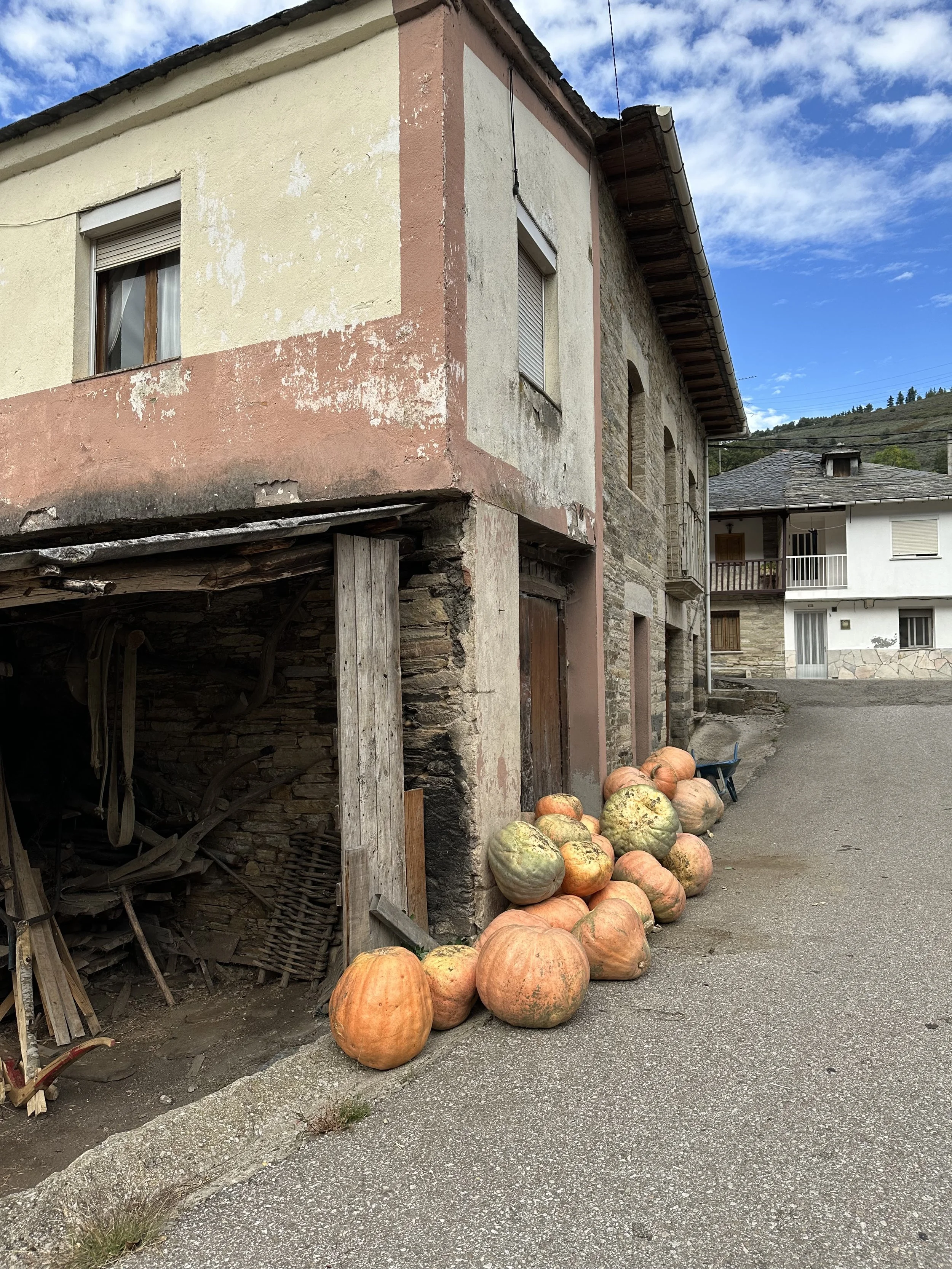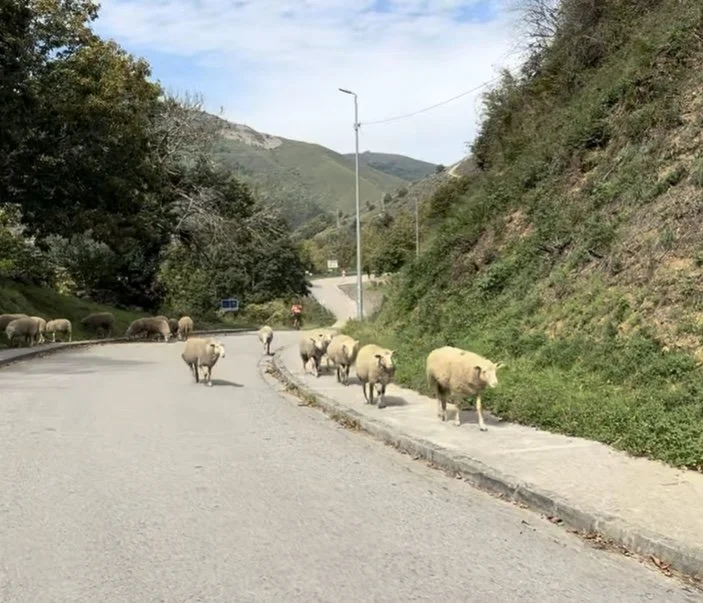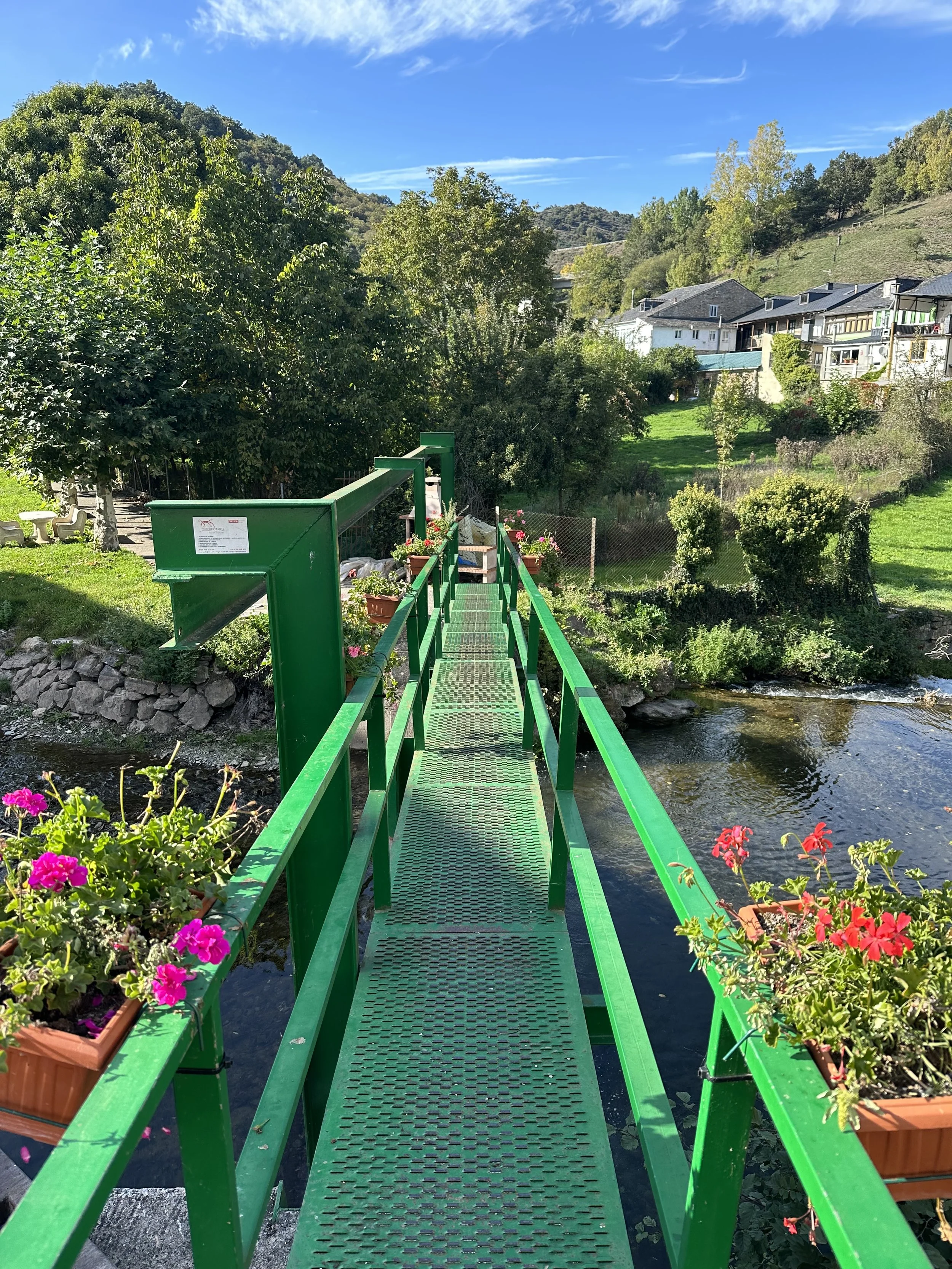Whispers from the Camino—Day 29
October 3. Cacabelos to Vega de Valcarce. 25 km.
Leaving Cacabelos before sunrise
The contemplative and reflective work that started the day before continued as I left Cacabelos. I had pondered whether I was placing too much of my identity on “successfully” giving congregations and church systems what they wanted. I was recognizing the grief associated with the discovery that even if churches articulated what they wanted it didn’t mean they were ready for the very thing they were asking for.
It was a stunningly beautiful day of walking with vineyard covered hills, quaint little villages, sheep crossing the road, marvelous cloud formations, a good connection over lunch with a woman from Denmark, and constant reminders of the spiritual nature of the Camino. I definitely took more pictures this day than on the entire trip, I was sure.
Sunrise. Nothing else needs to be said.
I called my second child, Jules, a hairstylist in Portland, Oregon. Of course, I wanted to talk to them (trans pronoun), but the revelation from the day before that I should probably put more of my sense of identity on family, friends and relationships than on professional success must have been the catalyst for the call this day. There was nothing of significance for me to report nor for Jules to share. It was just the joy and satisfaction of connection that I was going for. Jules and I agreed that we should work on connecting more often. I needed the connection and Jules needed the emotional support as they were experiencing some anxiety related to their gender-related transition.
I knew I had gifts to share with our communities, especially related to the formation and flourishing of spiritual communities. But I wondered what was out of alignment with my expectations and the reality of our churches. I spent most of my career as a visionary. It is very easy for me to look at something whether it is a rundown house, a plot of land, a relationship or a struggling congregation and see possibility. I am wired to look at almost every situation and immediately fall back on “what could be.”
Stunning cloud formations
This was going to be hard to accept, but I wondered if it was time for me to make a significant shift and learn to accept “what is” rather than focus so much on “what could be.” Even writing those words now is hard for me. I know it is rooted in my past. To accept “what is” feels like accepting a world that is too unbearable to live with. That is how it feels and also why it is so easy to pivot immediately to “what could be.”
But this pilgrimage seemed to be about finally acknowledging that something was out of alignment and that I couldn’t live any longer with the ongoing disappointment of unfulfilled expectations. I had spent a whole career being attracted to congregations who dreamed of the “what could be” only to discover that they weren’t as ready for the “what could be” as I had assumed and had built my professional identity on.
Two very clear images came to me—hospice chaplain and midwife. The images seemed to be more in line with actual reality of the congregations I was working with. Churches often asked for a full revitalization and transformation, but after nearly forty years of professional work I discovered that most really just needed an ecclesiastical hospice presence. That is, someone to walk with them in the grief of historic decline. A rare few were ready for someone to act as a midwife to something new—even if in an infantile stage.
I knew that I had the skills to do both. What I was needing was to acknowledge that my default position to dive headfirst into the “what could be” needed a reality check. Both me and the churches I was working with needed to learn first to accept what is. And, accepting what is meant showing up in most cases with my hospice hat on and in a few rare cases wearing the metaphorical scrubs of a midwife.
The work felt honest even if it was hard to accept. It was time for my expectations to come more into line with the reality of life as it is. I knew it was true, but I didn’t like it.
The day ended with mixture of feelings. Although I didn’t walk with the Danish woman I had met at lunch, we ended up in the same town at about the same time and with reservations at the same private hotel. Another pilgrim, a man, was waiting out front for the hotel to open. Seeing the two of us he struck up a conversation and almost immediately starting talking about Camino romances and then gestured to the two of us and suggested that maybe by the morning we would also have a romance. My Danish friend was married and there was nothing more than a good friendly connection between us. Both of us felt weird about it and found ourselves doing everything we could to stay clear of him. It was just a creepy vibe that neither of us liked.
The brigde over the creek by private hotel
Only two places were open in town for dinner and once again I found myself at the table of my two special education teaching German friends. We shared a bottle of wine and talked more about their one-year sabbatical from teaching. The Camino was actually their second major trip. The first was to Australia and they were going to follow up the Camino with a trip to England. We compared notes. I couldn’t imagine a scenario where special education teachers in America would get a full year off with pay to explore the world.
I was walking the Camino on my own dime. They were walking it as one of the benefits of paying German taxes. Apparently, so I’ve been told, Americans live in the greatest country in the world. But don’t tell that to my German friends. They didn’t know what they were missing.
This is one of the beauties of travel. So much much beauty. So much discovery. So much to learn.

